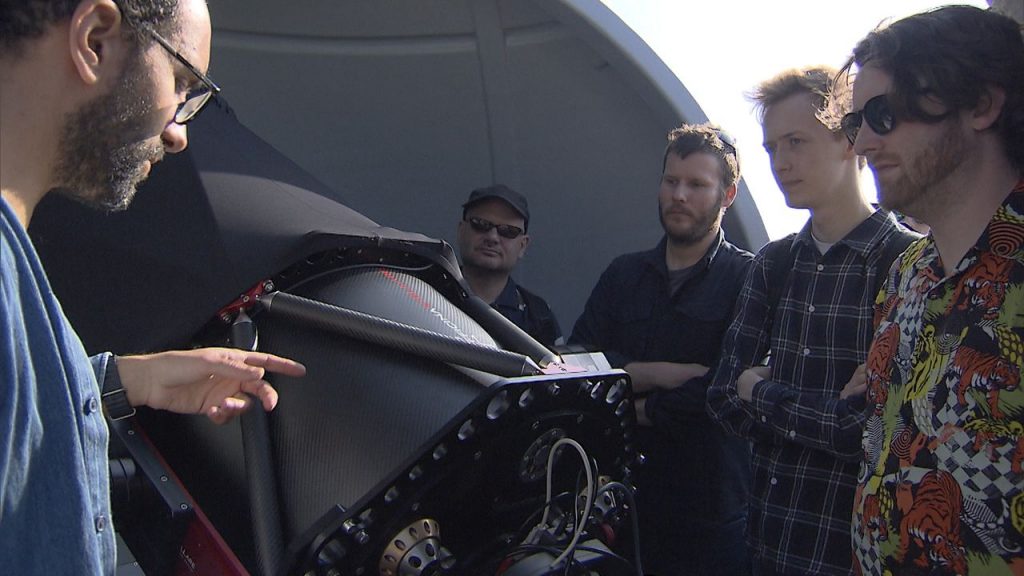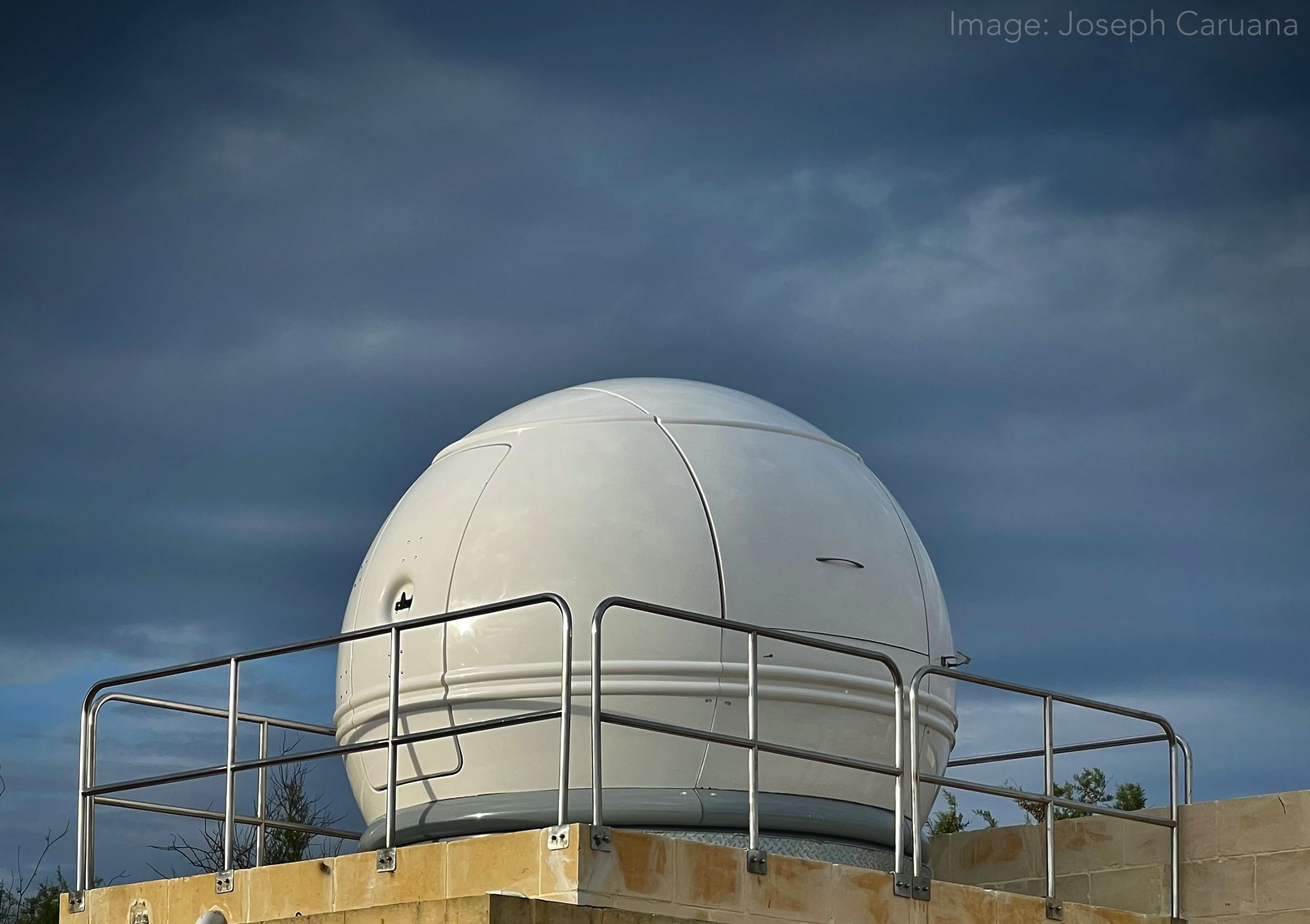josephcaruana/ May 30, 2023/ Uncategorised/ 0 comments
At long last, the Maltese Islands have an astronomical observatory that can be used for the training of astrophysics students as well as to serve an outreach purpose to educate the general public about the beauty of our Universe.
Along with others, I had long wished that the University would have a teaching tool available for students to be trained in observational astrophysics, and some years back. Since the observatory would have to be located in Gozo on account of a darker night sky, in 2017 the idea was proposed on behalf of the Institute to the EcoGozo directorate within the Ministry for Gozo. In the meantime, within my research group we had started carrying out studies over the entire Maltese archipelago to identify an appropriate site. Amongst other things, these studies entailed a detailed assessment of the night sky brightness.
A memorandum of understanding between the University of Malta and the Ministry was eventually drawn up, and this was signed in 2019. Four years down the line, the observatory has been set up and first light achieved. In the rest of this article, I very briefly outline what this process entailed.
The telescope and imaging equipment were packed securely inside the dome prior to shipping. The dome was sealed prior to being placed in a shipping crate. Upon arriving in Gozo, the crate was covered with a plastic sheet while in storage. This was a precautionary measure to protect it further until the crate was moved to the final site. The first step in the process was to remove the outermost cover to gain access to the crate. Following this, we opened the crate to have a first look at the sealed dome inside and, subsequently, the dome itself.
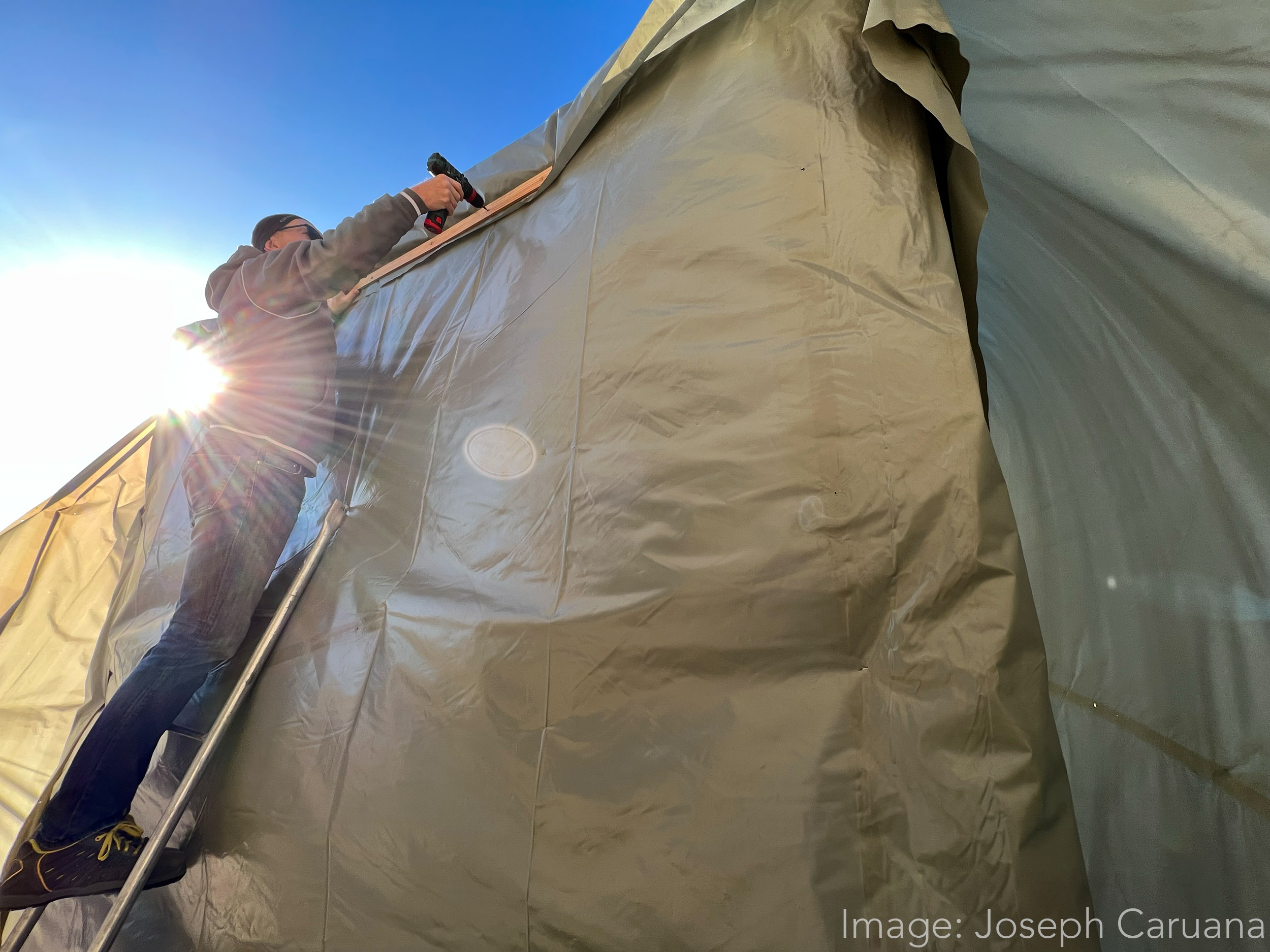
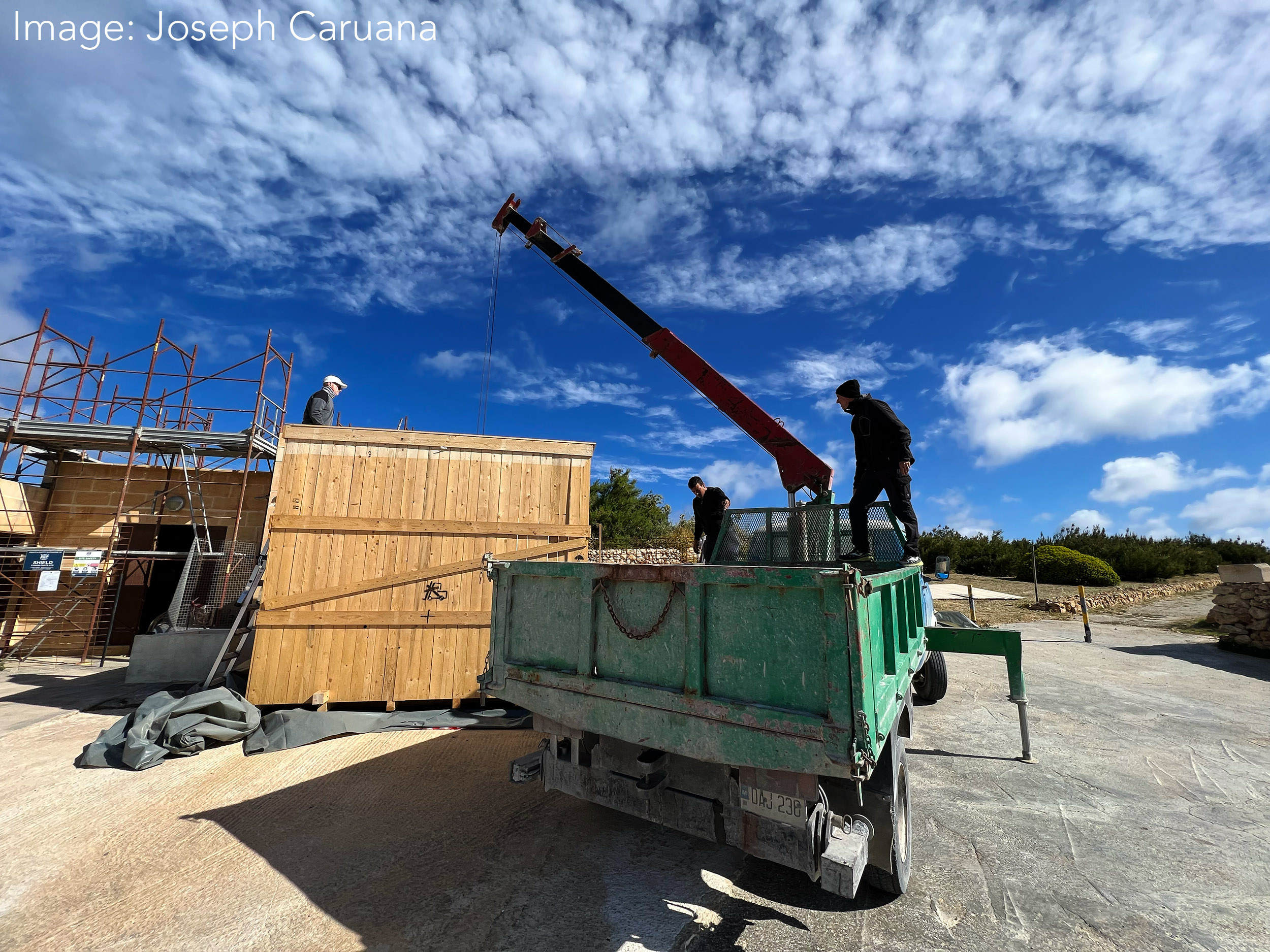
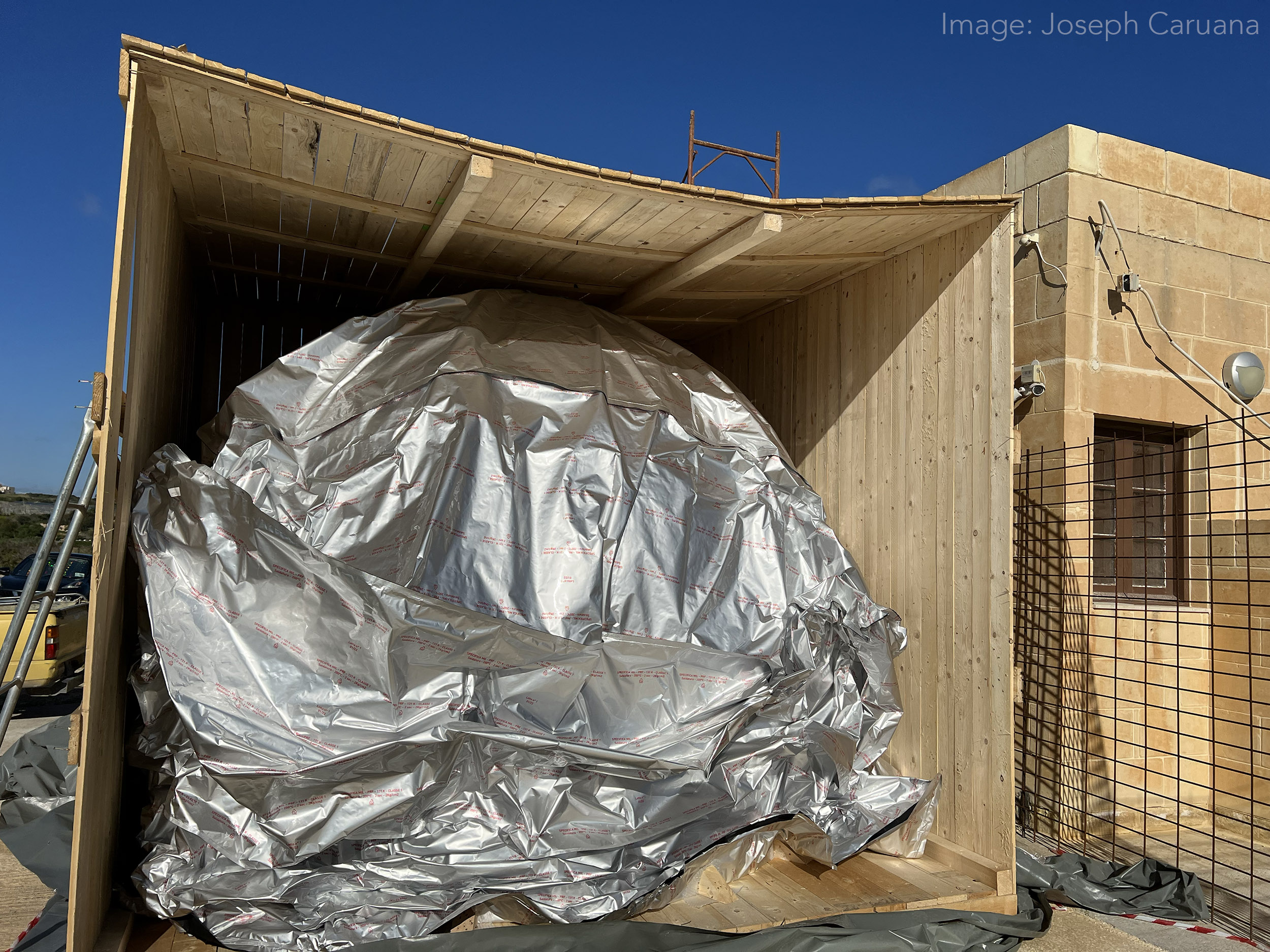
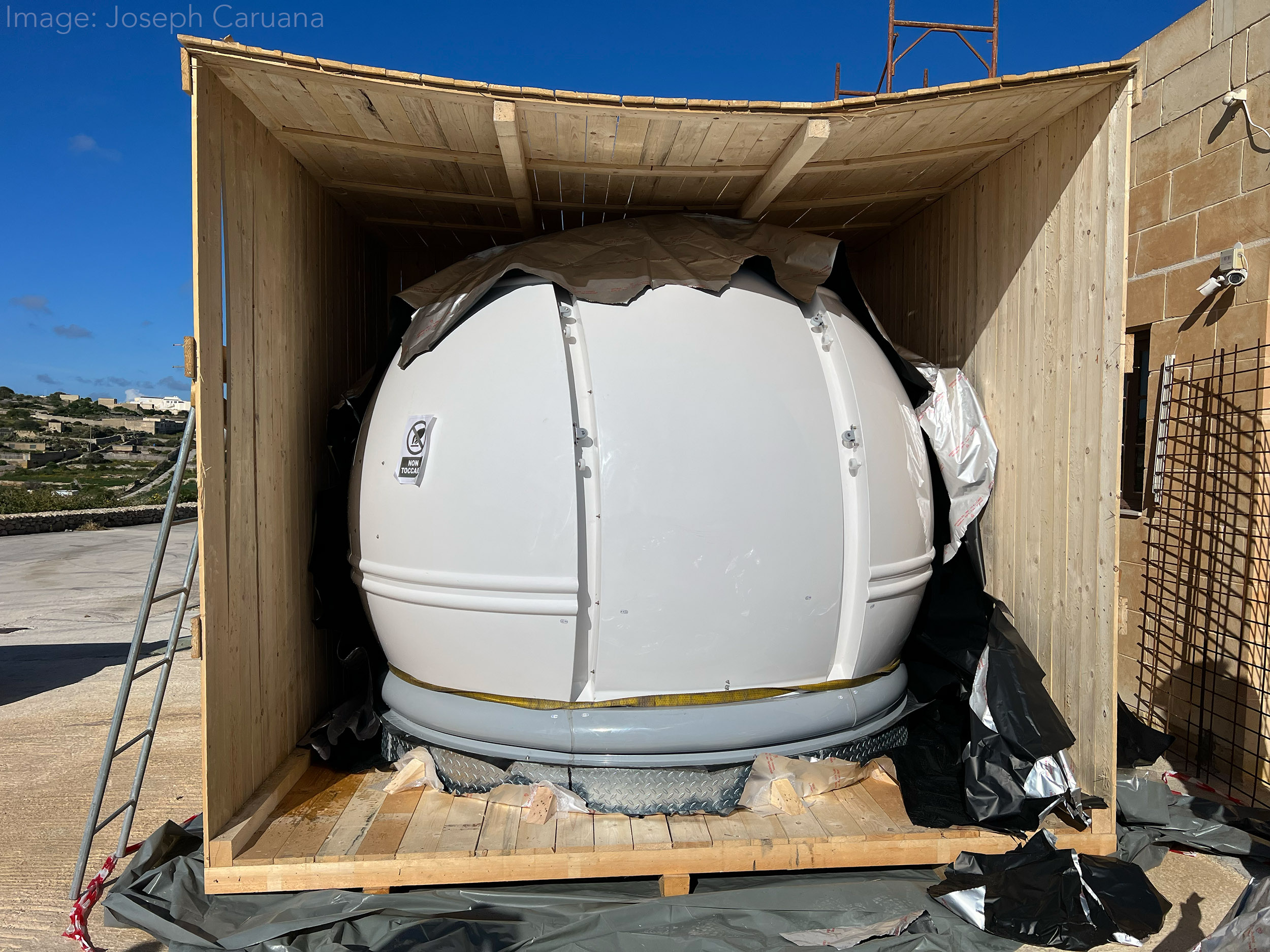
We then laid out the individual components at the site, and they were prepared to be lifted one by one and laid atop the roof. Following meridian measurements for proper alignment, the dome, mount and Optical Tube Assembly (OTA) were installed in sequence (photos below). It sounds easy when I describe it in that manner in a single sentence, but this entailed long hours of work and coordination. Here thanks are due to the EcoGozo director who helped greatly with managing the logistics.
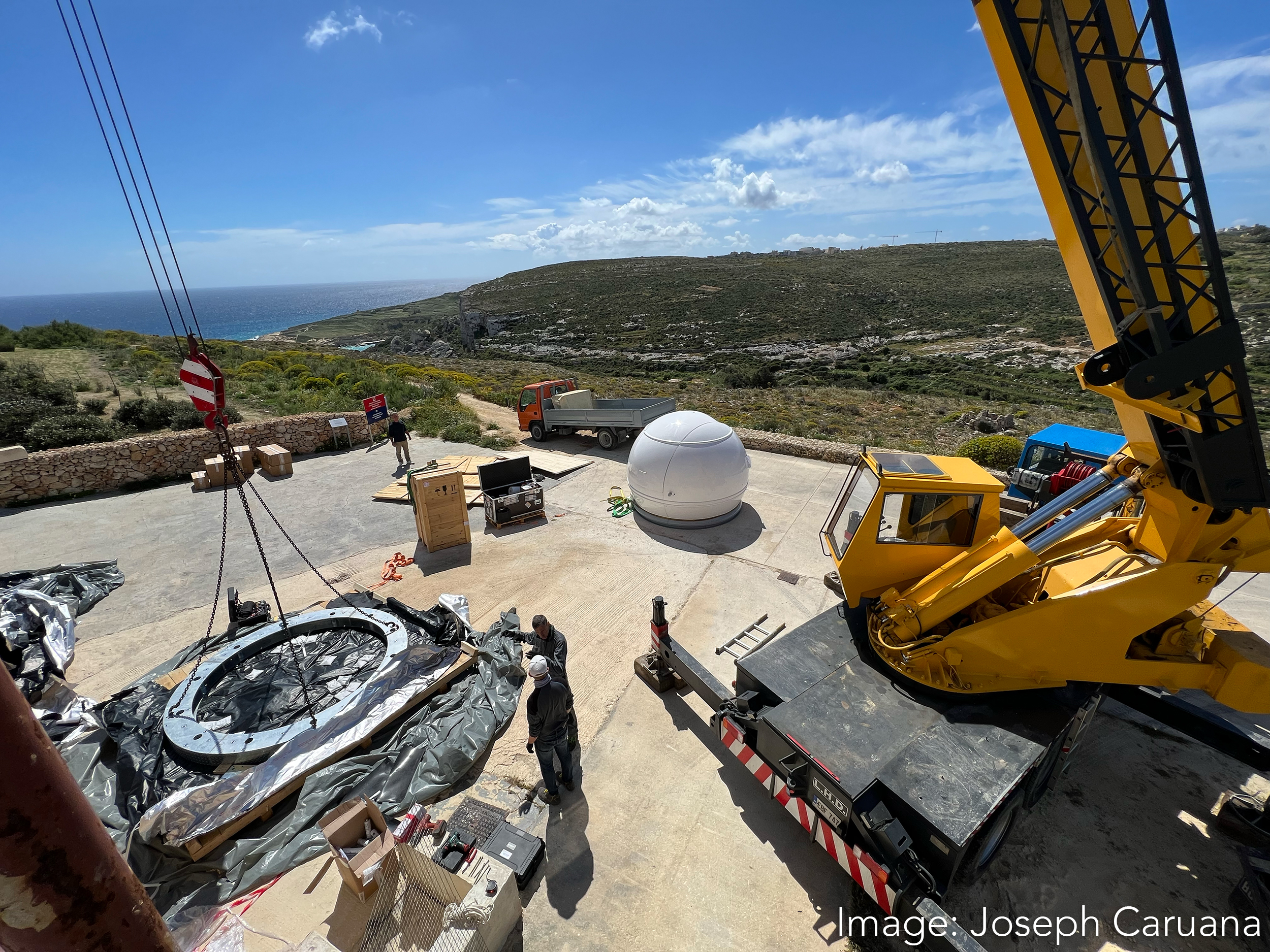
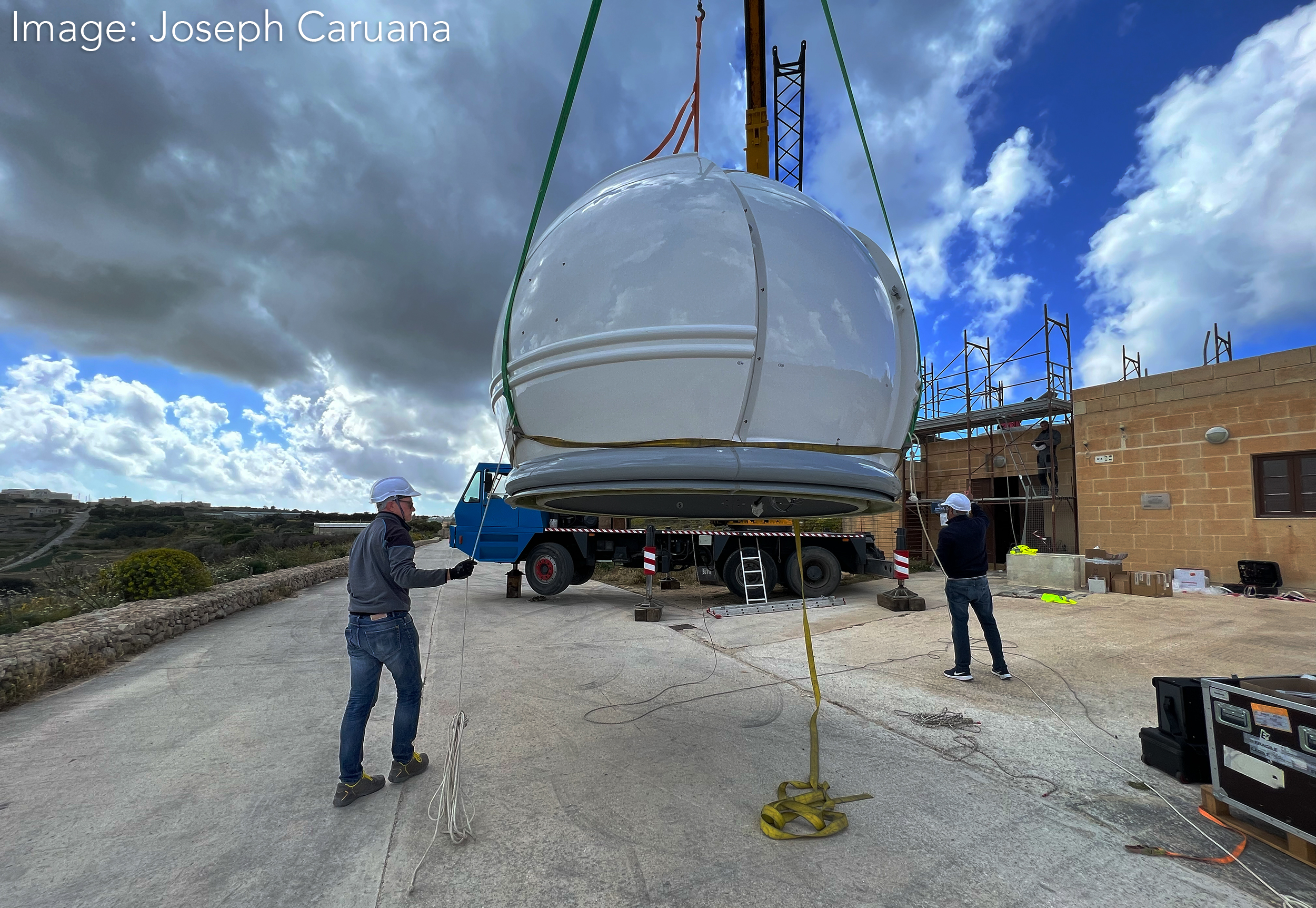
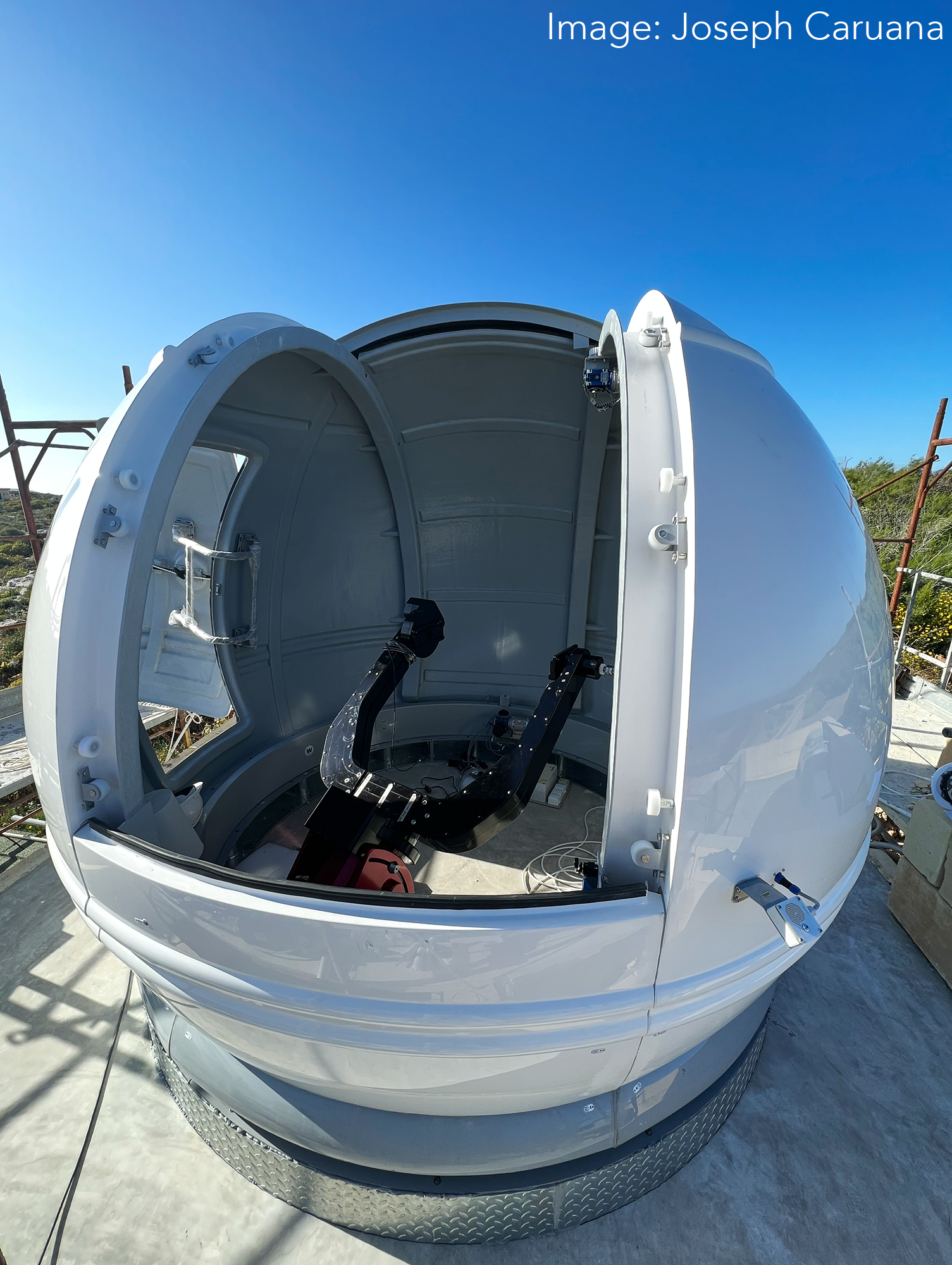
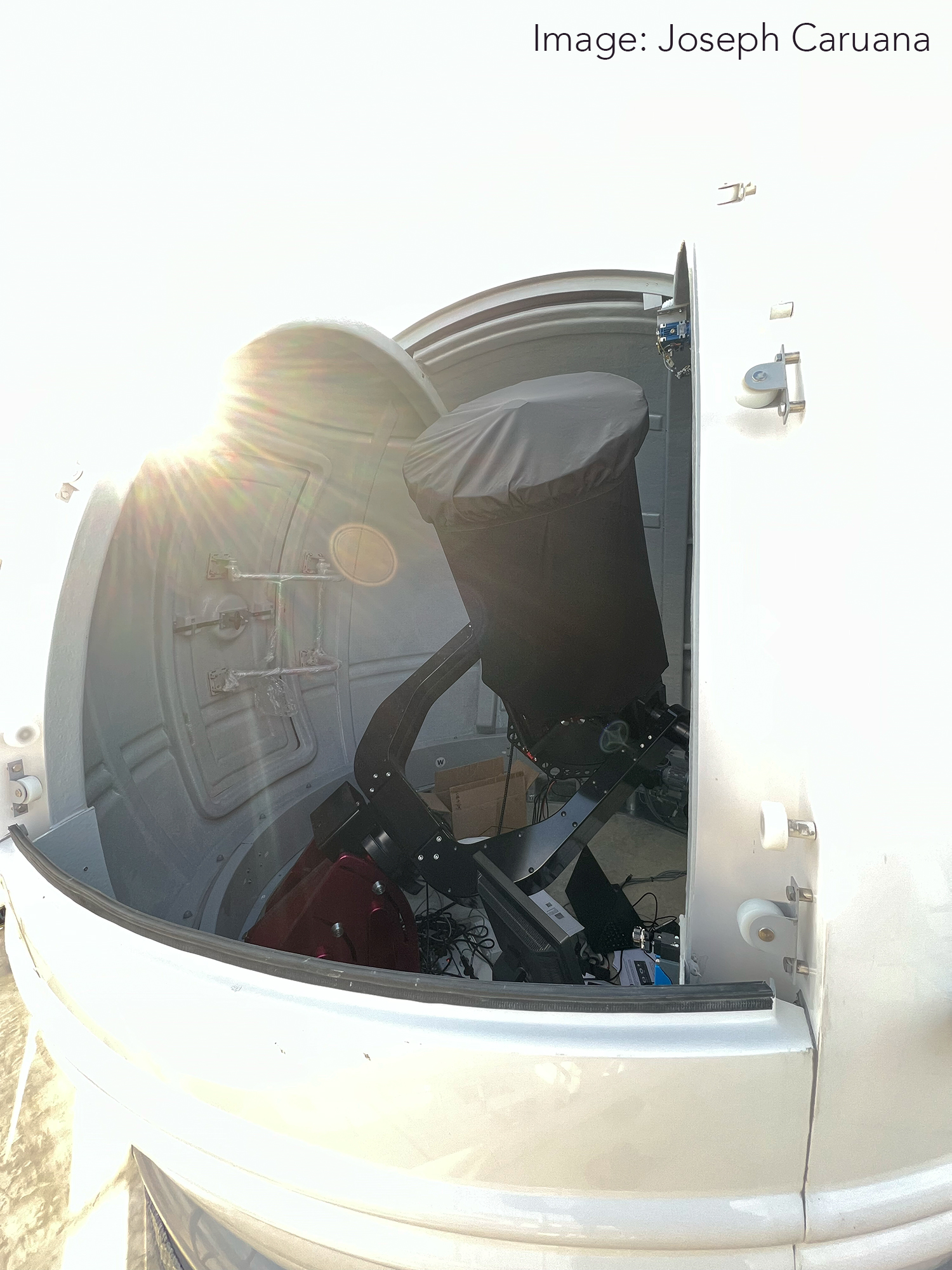
Next, we installed the imaging train, that is to say the components responsible for producing images. In this case, it comprises a purpose-built (custom-made) focal reducer, adaptive optics module, off-axis autoguider, filter wheel, and cooled camera.
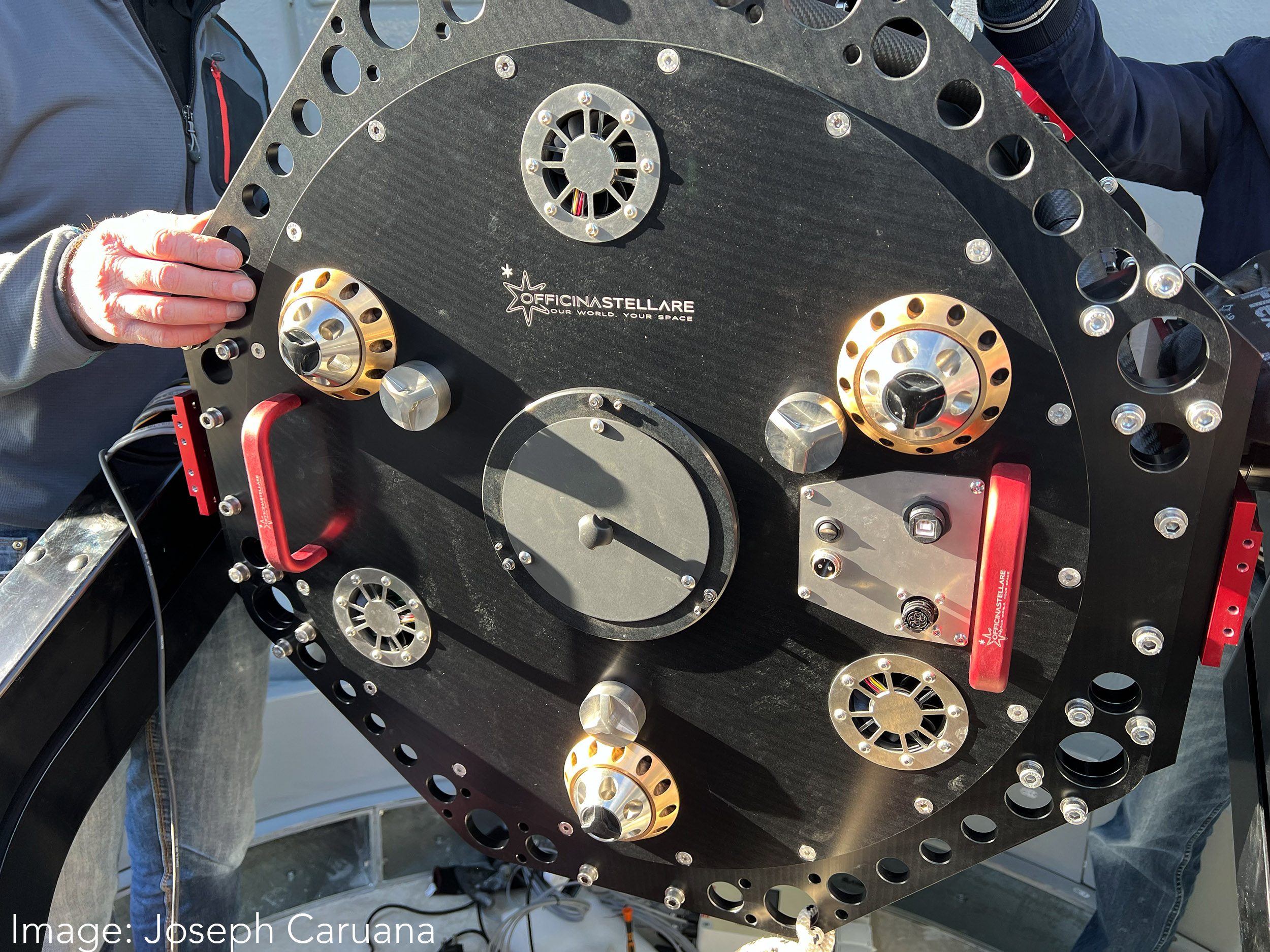
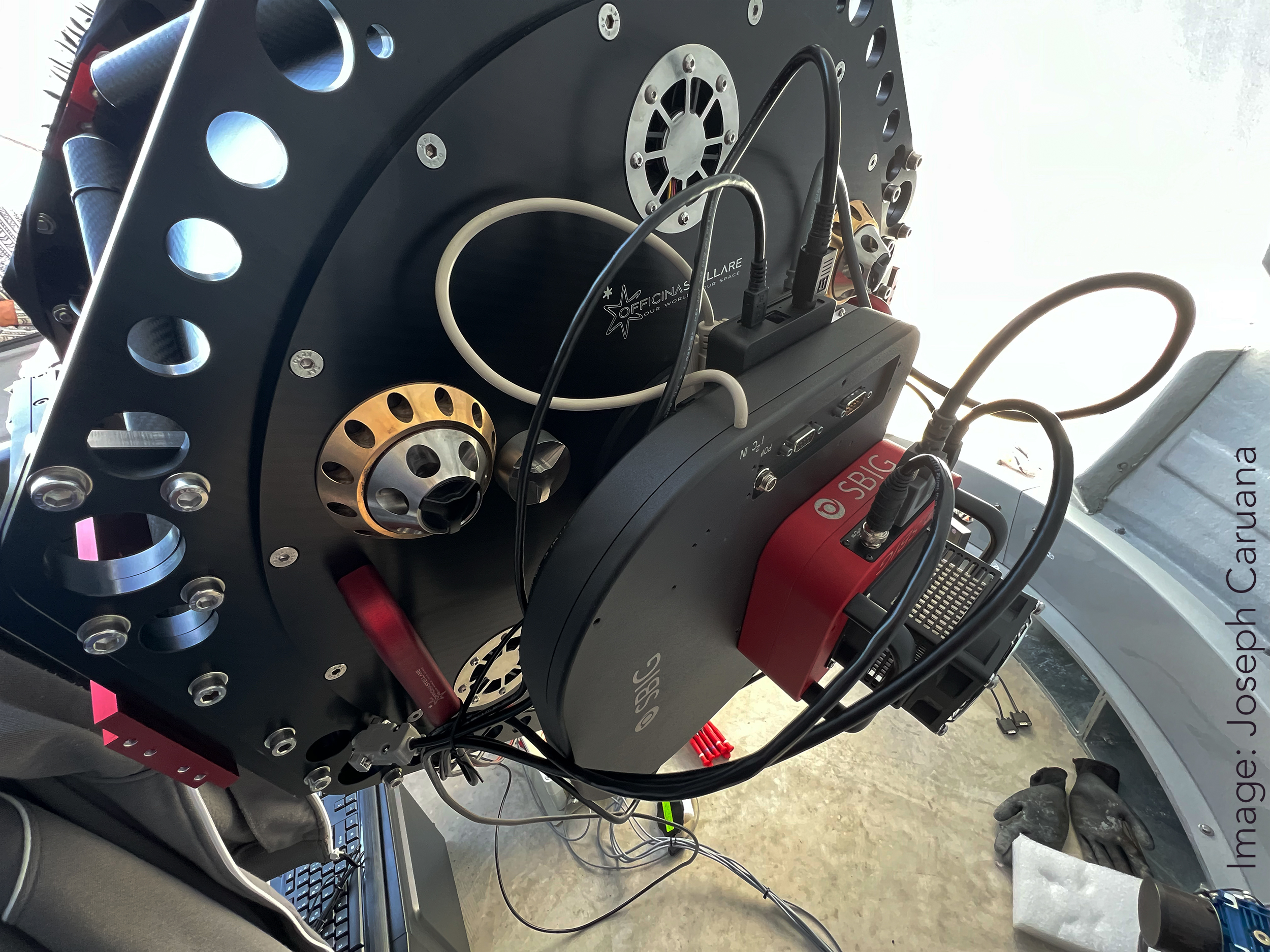
Next came the setting up of the observatory parameters, which are crucial to ensure proper working and synchronisation of telescope and dome. This was followed by refinement of the system alignment, and further tweaking of the parameters until we were happy. Of course a lot of this work had to be carried out at night, and entailed a lot of patience. Bigourdan’s method came in handy for the first precision alignment!
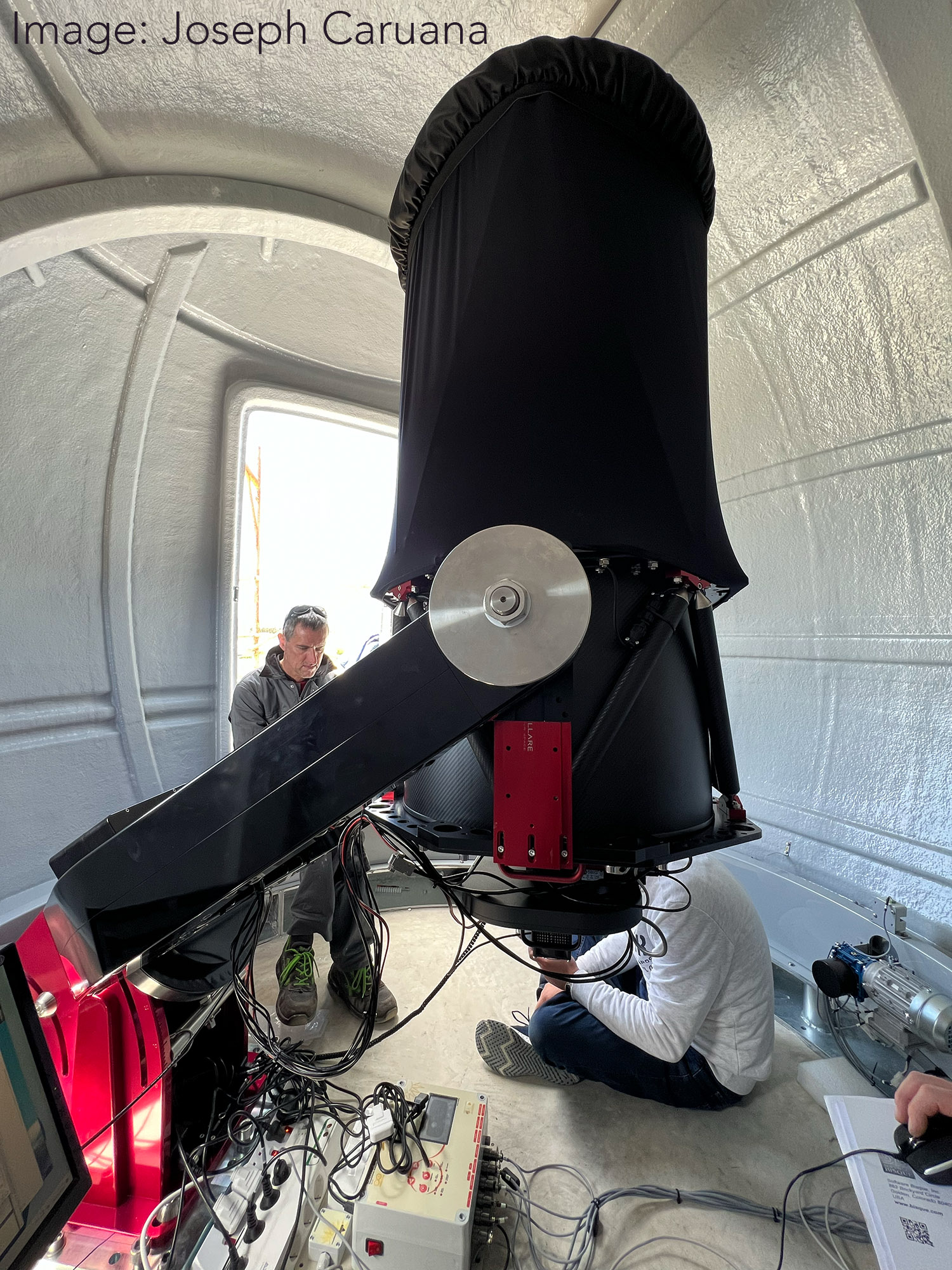
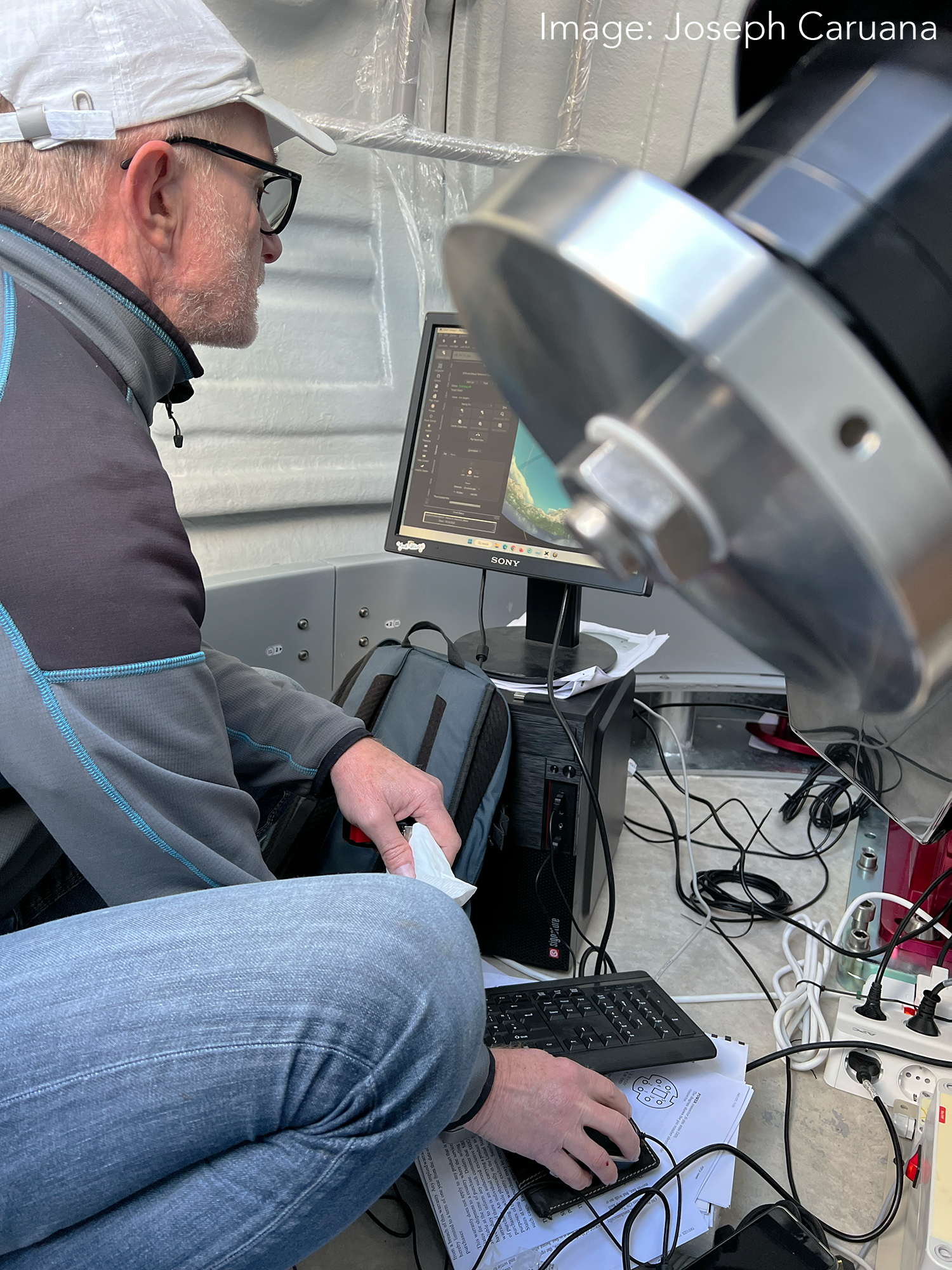
I spent the following nights carrying out some tests and deriving an initial pointing model for the telescope. And then came first light! I chose the galaxy M51 as the first target. A few seconds’ exposure… and BOOM – there it was on the screen!
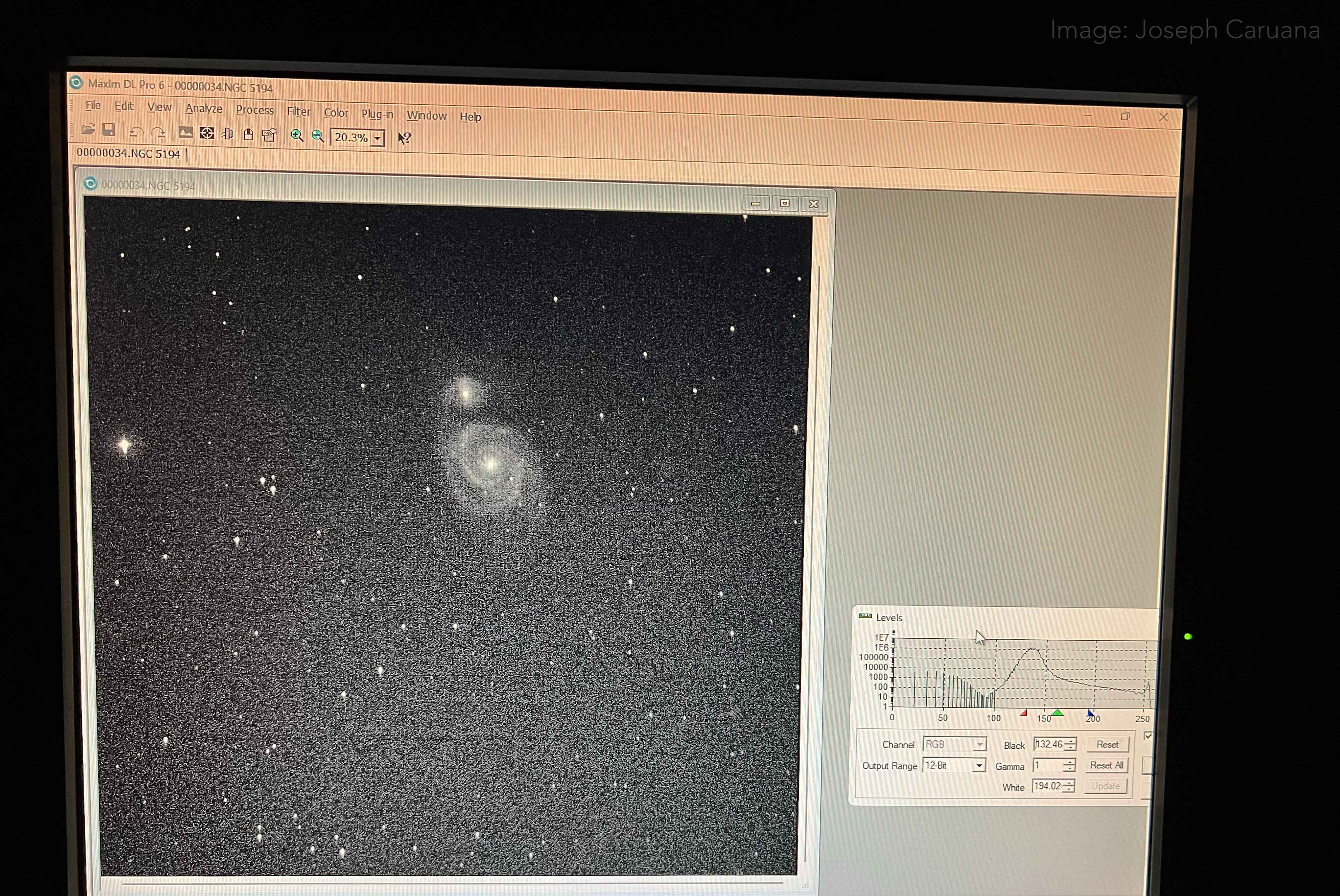
More patience, further tests… and I derived an updated pointing model. It was time to try out some relatively short-exposure (uncalibrated) multi-filter imaging. The first target was again M51, followed by M81. Over the next days I tried out M63 and a crescent moon.
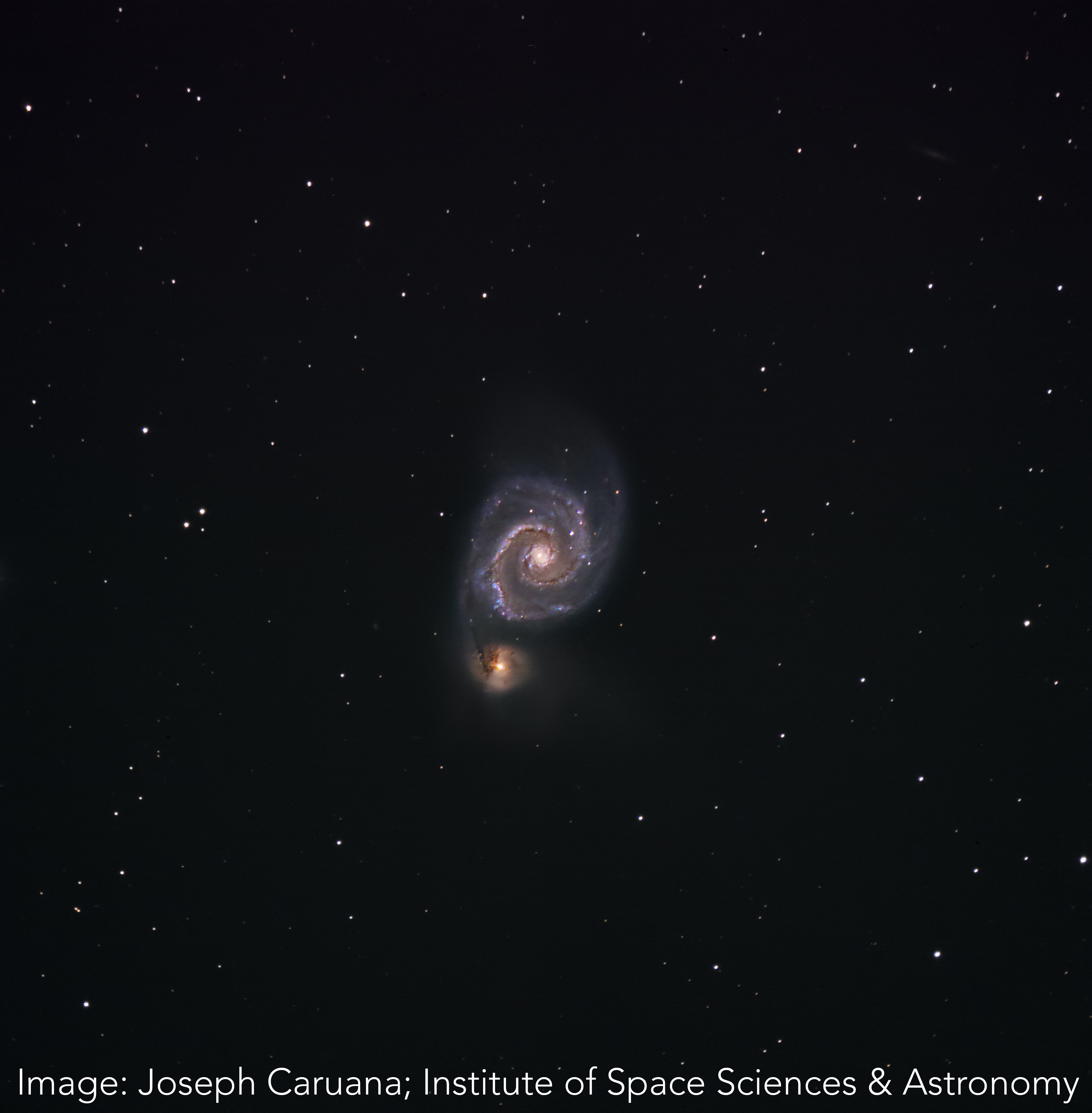
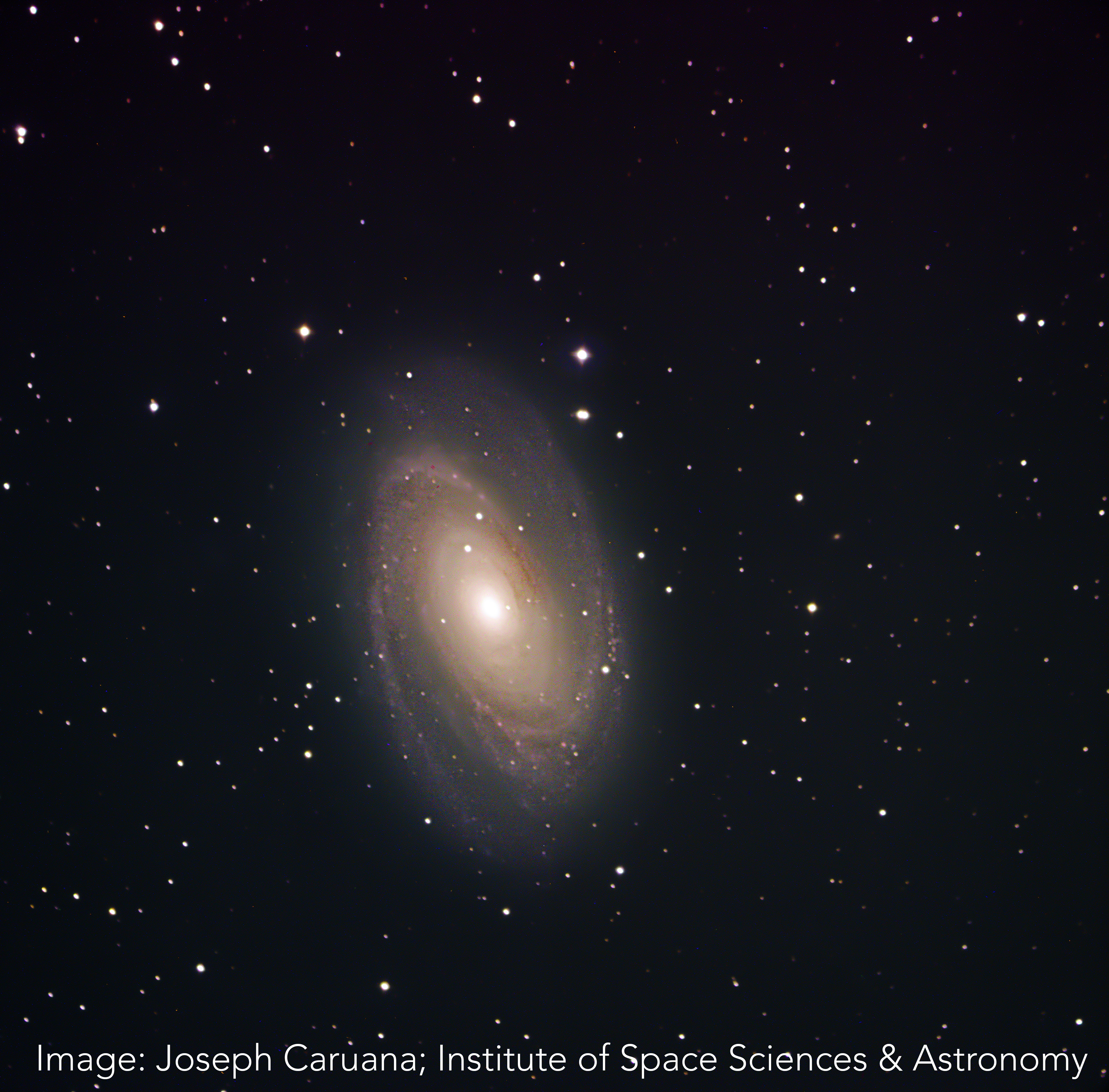
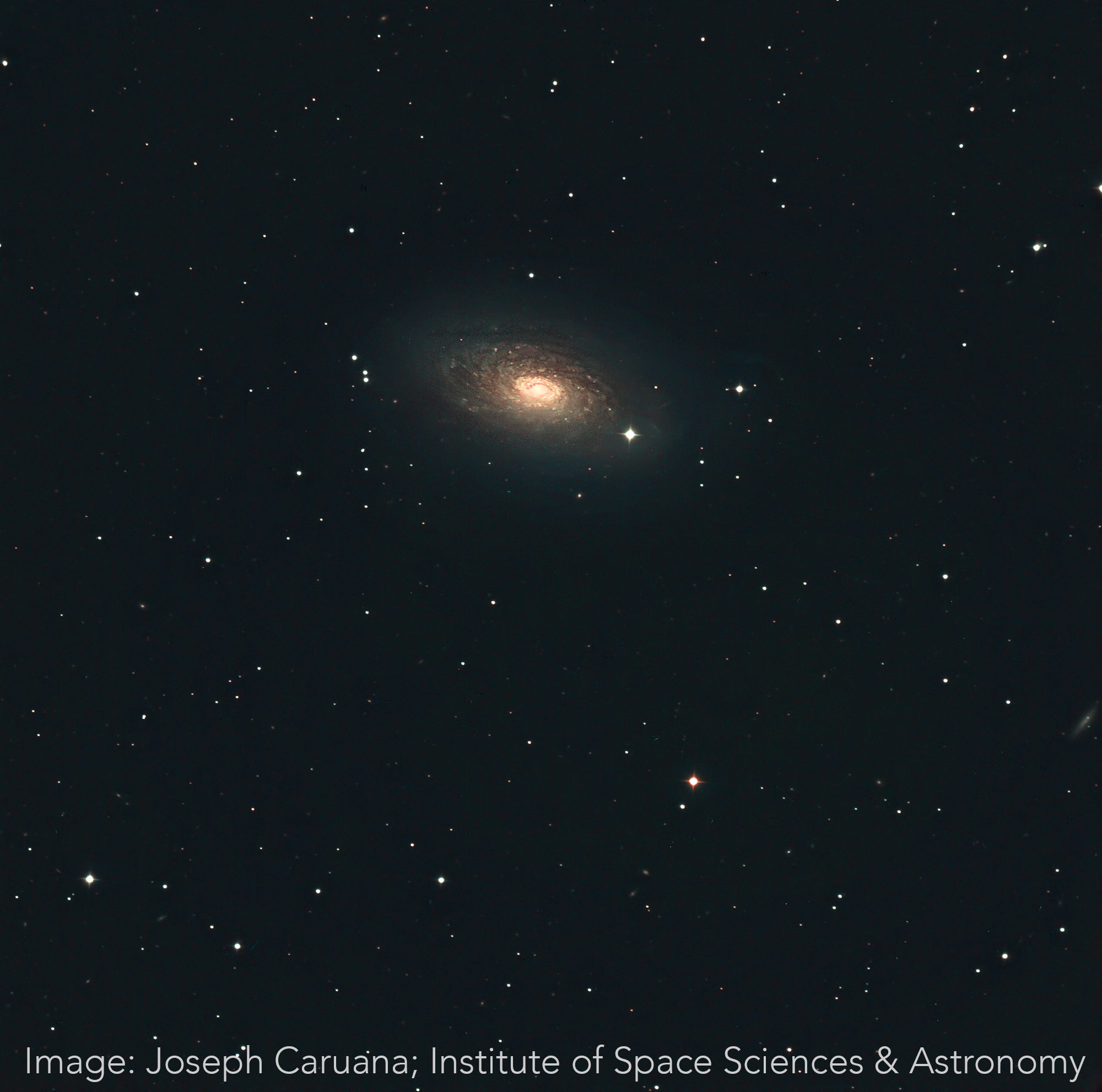
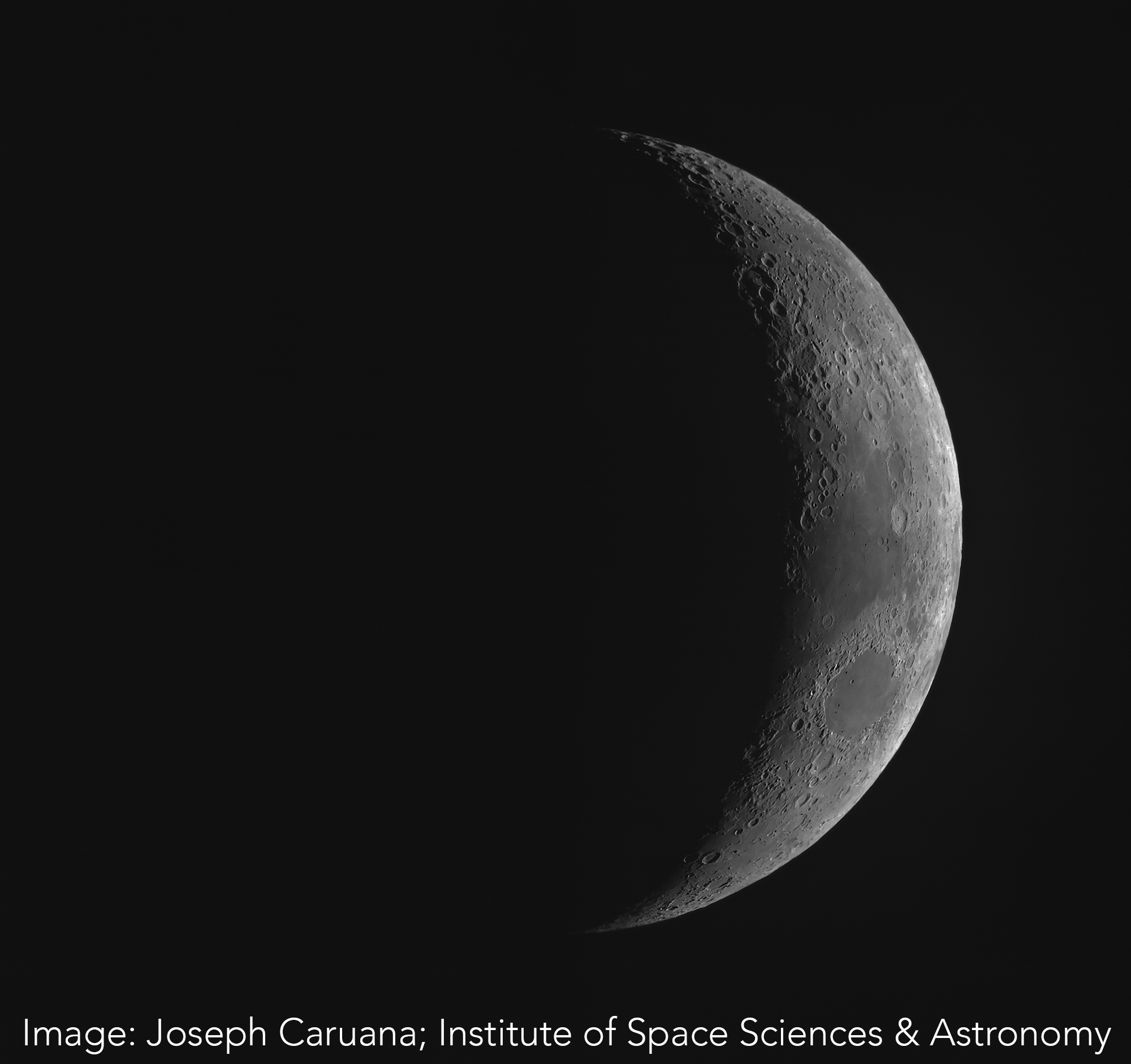
And there it is, folks! First light with a newly-installed 0.5 m Ritchey Chrétien telescope. This is just the very beginning. It’s a marvellous tool for our students, and a great resource to show the general public the beauty of the night sky.
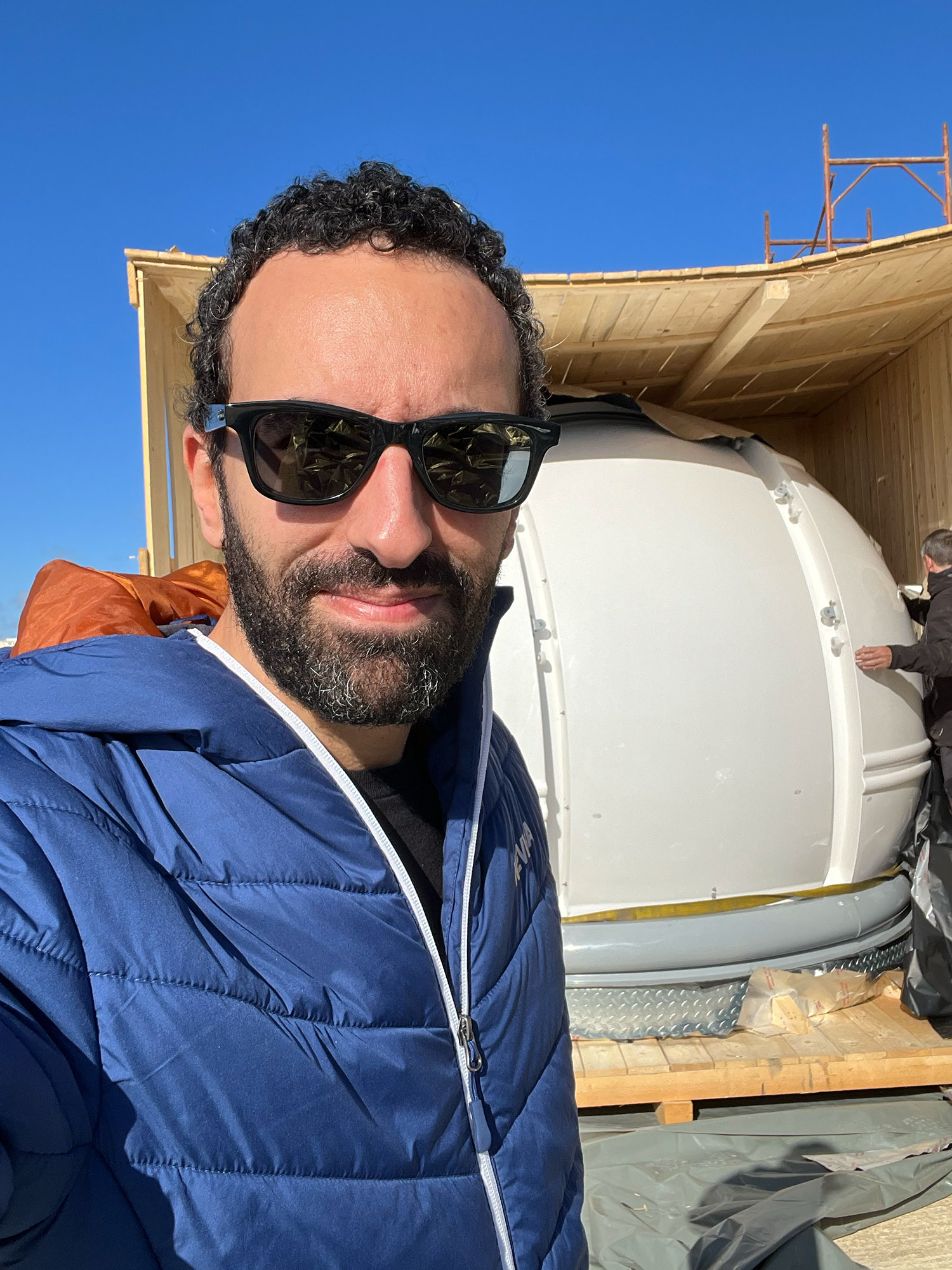

A couple of photos of my happy self (disguising the tiredness) during the process.
Shortly after the completion of the observatory, a number of collaborating astronomers who were visiting Malta for a meeting co-organised by Stephen Wilkins (University of Sussex) and myself took the opportunity to visit the new observatory. As part of this meeting, we discussed collaborative work using this telescope.
